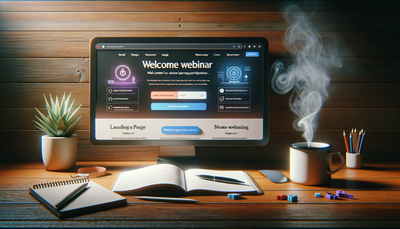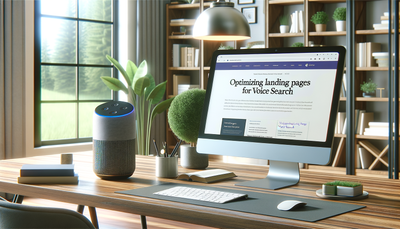The Impact of Images on Landing Page Performance
Images play a crucial role in the performance of landing pages, significantly influencing user engagement and conversion rates. This article delves into the impact of visual elements on landing page effectiveness, exploring how strategic image choices can elevate user experience and drive desired actions. We'll examine best practices for image selection, optimization techniques, and ideal placement strategies to maximize the impact of visuals on your landing pages. By understanding the power of images and implementing these insights, you can create more compelling and high-converting landing pages that resonate with your target audience and achieve your marketing objectives.Table of Contents:

The Power of Visual Communication
Images are a powerful tool in conveying messages and evoking emotions on landing pages. They can instantly grab attention, communicate complex ideas, and create a lasting impression on visitors. Research shows that the human brain processes visual information 60,000 times faster than text, making images an essential component of effective landing page design.When used strategically, images can help reinforce your value proposition, showcase products or services, and build trust with potential customers. They can also guide visitors' attention to key elements on the page, such as call-to-action buttons or important information. By leveraging the right images, you can significantly enhance the overall user experience and increase the likelihood of conversions.
Do you need a website? Want to build a website but don't know where to start? Our website builder is the perfect solution. Easy to use, and with the ability to customize to fit your business needs, you can have a professional website in no time.
Choosing Relevant and High-Quality Images
Selecting the right images for your landing page is crucial for maximizing its impact. Start by choosing visuals that are directly relevant to your offer and align with your brand identity. Avoid generic stock photos that may appear inauthentic or disconnected from your message.Opt for high-quality images that are sharp, well-lit, and visually appealing. Poor-quality or pixelated images can negatively impact user perception and credibility. Consider using professional photography or investing in custom illustrations to create a unique and polished look for your landing page.
Additionally, ensure that your chosen images resonate with your target audience. Use visuals that reflect their demographics, interests, and aspirations to create a stronger connection and increase engagement.
Optimizing Images for Performance
While high-quality images are essential, it's equally important to optimize them for web performance. Large image files can significantly slow down page load times, leading to higher bounce rates and lower conversion rates. To address this, implement the following optimization techniques:1. Compress images without sacrificing quality using tools like TinyPNG or ImageOptim.
2. Use appropriate file formats: JPEG for photographs, PNG for graphics with transparency, and SVG for logos and icons.
3. Implement lazy loading to prioritize above-the-fold content and improve initial page load times.
4. Utilize responsive images to serve appropriately sized versions for different devices and screen resolutions.
By optimizing your images, you can ensure faster page load times, improved user experience, and better overall landing page performance.
Building a website with SITE123 is easy
Strategic Image Placement
The placement of images on your landing page can significantly impact user engagement and conversion rates. Consider the following best practices for optimal image placement:1. Use a hero image or video above the fold to create a strong first impression and communicate your main message.
2. Place product images near relevant descriptions or features to provide visual context.
3. Incorporate images of people using your product or service to create emotional connections and showcase real-world applications.
4. Use directional cues within images to guide visitors' attention towards important elements like call-to-action buttons.
5. Implement before-and-after images to demonstrate the value of your offering.
Experiment with different image placements through A/B testing to determine the most effective layout for your specific audience and goals.
Leveraging User-Generated Content
Incorporating user-generated content (UGC) in the form of images can significantly boost the credibility and authenticity of your landing page. UGC, such as customer photos or testimonials with accompanying images, provides social proof and helps potential customers visualize themselves using your product or service.Encourage customers to share their experiences through photos and videos, and feature the best submissions on your landing page. This not only adds a personal touch but also increases trust and relatability. Additionally, UGC can help diversify your visual content and keep your landing page fresh and engaging over time.
When using UGC, always obtain proper permissions and credit the original creators to maintain ethical practices and foster positive relationships with your community.
A/B Testing and Performance Tracking
To truly understand the impact of images on your landing page performance, it's essential to conduct regular A/B tests and track key metrics. Experiment with different image styles, sizes, placements, and even the absence of images to determine what resonates best with your audience.Monitor important performance indicators such as bounce rate, time on page, click-through rate, and conversion rate to gauge the effectiveness of your image choices. Use heat mapping tools to visualize how users interact with images on your landing page and identify areas for improvement.
Remember that image performance may vary depending on factors like your industry, target audience, and specific offer. Continuously test and refine your approach to discover the optimal image strategy for your unique landing page goals.





